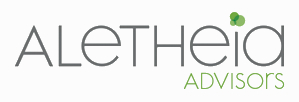HOW CONSIDERING CONTEXT FACILITATES BETTER CAREGIVER/PATIENT COMMUNICATION AND CREATES MOTIVATION FOR HEALTH
Technology-enabled health solutions often focus heavily on one of 5 core health motivators. Incorporating elements from each may result in more impactful solutions that map short-term actions to long-term goals. Let's take a deeper look at one of these health motivation tools--Health Information In Context--all five are listed below (in no particular order).
- Health Information in Context
- Healthy Competition
- Recognition of Achievement
- Straight Up Money!
- Peer and Clinician Relationships
Historically, patient education has often involved reviewing 'raw' information that is meaningful to clinicians but difficult for patients to interpret. In addition, caregivers often communicate/educate through care plans created from a clinical perspective using clinical language.
Technology is enabling much broader patient access to personal medical records which provides an opportunity to rethink how this information is presented/communicated. Considering the context of this important exchange will maximize the impact of these emerging tools.
Context is an interesting concept. While we often think about context specific to information as in a scale or anchor point for understanding (which is important), an even more important aspect of context for health information might be the details surrounding the transfer of that information. Consider this definition of context from Wikipedia:
Context: "The relevant constraints of the communicative situation that influence language use, language variation, and discourse summary."
There are two fundamental constraints clinicians face when discussing health information with patients; time and knowledge disparity.
Limitation of time is well documented. In a volume-based health economic system where time is money, the amount of time clinicians have to interact with patients is extremely limited. From a patient (consumer) perspective, the sheer volume of information from harried, over-scheduled lives places a premium on time and impacts the ability to engage, digest, and learn. These constraints of time are exacerbated by a clinical knowledge disparity between clinicians and patients and among patients.
As technology makes information more and more accessible, we are in the midst of a (hopefully) constructive debate regarding who owns clinical data. In a recent panel at Health 2.0, Lucia Savage, Chief Privacy Officer at the Office of the National Coordinator for HealthIT (ONC), suggested that the more pertinent question might be: "What are people with access to health data doing with it?" Ms. Savage was speaking about controls and protection but it strikes me that as healthcare providers we should likely be asking ourselves an even more impactful question:
Are we who have access to 'raw' clinical data working to present that information to patients in meaningful, impactful ways?
Access to personal health records is one thing, transferring health information meaningfully under the constraints of limited time and disparate knowledge bases is quite another. In 2010 Wired Magazine ran a fantastic article on this topic: The Blood Test Gets a Makeover. The article highlights both an improved visual presentation of information and a consistent process of communication that includes anchor points. In effect, the approach also considers the constraints of the information exchange context in contrast to the standard practice of presenting/reviewing raw numbers and ranges.
Below is a quick (paraphrased) overview of the article's proposed process for communication of lab results:
- Simple Summary of the what the test is/is for...
- Result with simple interpretation i.e. this result is in the moderate range indicating...
- Implications/Risk in real terms i.e. results in this range indicate a percentage risk for a disease/event in the next 10 years...
- Actions: Simple suggestions for how to change this measure with quantified impact on risk i.e. if you lower this measure by this much, your risk for a disease/event will lower that much...
Of course the communication/education challenge reaches well beyond lab results. There is much work to do but there are also encouraging signs. Three companies presenting at the recent Health 2.0 conference showed unique approaches to moving beyond health record access toward patient education/communication and impact. Here they are in their own words:
GLIIMPSE: From Gliimpse To Great
How to use your digital health to care for your analog life. Our vision is a personalized and shareable health record for all 317,000,000 Americans.
Docola: Simply, Patient Engagement
Docola believes that meaningful conversations between patients and clinicians improve healthcare. We are passionate about engaging conversations which is why we created a solution we know you will fall in love with.
Medtep: Health starts with U
Facilitating lasting behavioral changes by personalizing validated prevention and treatment plans. We take clinical protocols and turn them into care plans that patients can understand.
Effective transfer of health information from clinicians to patients is an important piece of the health motivation puzzle. In addition to those shown above, there are a multitude of good examples that take advantage of new technology to not only provide broader access to information but also facilitate efficient, improved clinician/patient communication.
In order to motivate individuals and populations for health and transform health care, we need to be make these best practices standard AND incorporate other motivational tools into complete, impactful, solutions.
Let's get motivating!
